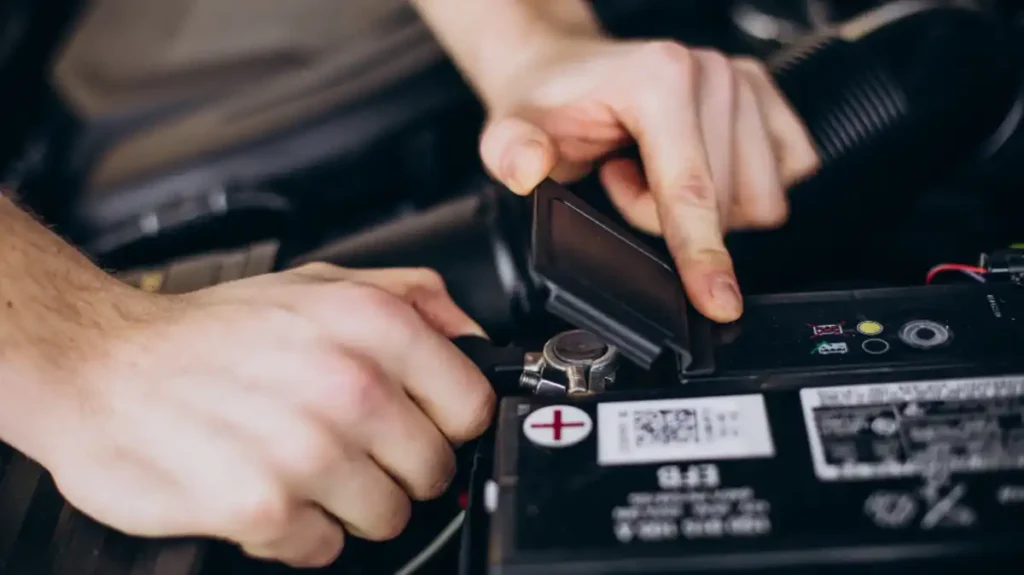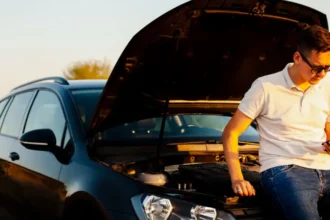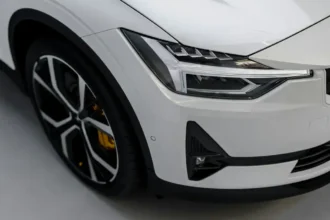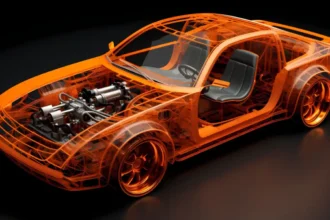There’s nothing more frustrating than turning the key in your car’s ignition and hearing nothing but silence. A dead battery can strike at the most inconvenient moments, leaving you stranded. Whether it’s the result of leaving your lights on or simply an aging battery, knowing how to safely jump-start your car is an essential skill that can save you time and hassle. With a few basic tools and the right steps, you can get your car back on the road quickly and safely, avoiding costly roadside assistance. Let’s walk through a safe, simple guide to jump-starting your car.
Why Knowing How to Jump-Start a Car is Essential
Car batteries can die unexpectedly for a number of reasons—leaving your headlights on, cold weather, or simply an aging battery. Having the knowledge to jump-start your car ensures you’re not left stranded or dependent on roadside assistance. It’s a practical life skill that could save you time and money.
What You’ll Need to Jump-Start a Car
Before diving into the process, let’s cover the essential tools and equipment you’ll need to safely jump-start your car.
- Jumper Cables: A good set of jumper cables with insulated handles and a wire gauge rating of 4 or 6 is ideal.
- Another Vehicle with a Charged Battery: This is the donor car that will help recharge your dead battery.
- Gloves and Eye Protection: Safety first! Gloves and protective eyewear can help protect you from sparks or battery acid.
Alternatively, you can use a portable jump starter, which doesn’t require another vehicle.
Step-by-Step Guide to Safely Jump-Start Your Car

1. Park the Cars in Position
- Park the cars so they’re close enough for the jumper cables to reach, but not touching. This reduces the risk of electric shock.
- Turn both vehicles off and put them in park (or neutral if using a manual transmission).
2. Attach the Jumper Cables in the Correct Order
This step is crucial for safety, as improper cable connection can cause sparks or damage to the car’s electrical system. Follow this exact sequence:
- Red clamp to the dead battery’s positive terminal (+).
- Red clamp to the donor battery’s positive terminal (+).
- Black clamp to the donor battery’s negative terminal (-).
- Black clamp to an unpainted metal surface on the dead car (away from the battery). This acts as a grounding point and reduces the risk of a spark near the battery.
Tip: Make sure the clamps are secure and have good contact with the terminals.
3. Start the Donor Car
Once the cables are connected, start the vehicle with the charged battery and let it idle for a few minutes. This will transfer some charge to the dead battery.
4. Start the Dead Car
After a few minutes, attempt to start the car with the dead battery. If the engine doesn’t start immediately, wait a few more minutes and try again. If the car still won’t start, you may need to check the connections or have the battery tested.
5. Remove the Jumper Cables in Reverse Order
Once the dead car is running, carefully remove the jumper cables in the reverse order:
- Black clamp from the unpainted metal surface.
- Black clamp from the donor car’s negative terminal (-).
- Red clamp from the donor car’s positive terminal (+).
- Red clamp from the dead car’s positive terminal (+).
6. Let the Jump-Started Car Run
Let the car that was jump-started run for at least 15-20 minutes to allow the alternator to charge the battery. If you turn off the engine too soon, the car might not restart.
Common Mistakes to Avoid When Jump-Starting a Car
- Incorrect Cable Order: Connecting the cables in the wrong order can cause sparks, damage the electrical system, or even result in injury.
- Touching the Clamps Together: Make sure the clamps don’t touch each other once attached to the car batteries, as this can cause a short circuit.
- Jump-Starting a Damaged Battery: If you notice any signs of a damaged battery (such as leaking fluid or a swollen case), do not attempt to jump-start it. Call for professional help instead.
Safe Guide to Jumper Cable Connection
| Step | Positive (Red) Cable Connection | Negative (Black) Cable Connection |
|---|---|---|
| Step 1: Dead Battery | Positive terminal (+) | – |
| Step 2: Donor Battery | Positive terminal (+) | Negative terminal (-) |
| Step 3: Grounding Point | – | Unpainted metal surface on dead car |
How to Jump-Start a Car Using a Portable Jump Starter
A portable jump starter eliminates the need for another vehicle and is especially useful in remote areas or when other drivers aren’t available to help. Here’s a quick guide to using one safely:
- Turn off the car and connect the cables to the jump starter following the same order as you would with jumper cables.
- Power on the jump starter.
- Attempt to start your car. If successful, turn off the jump starter and disconnect the cables in reverse order.
- Recharge the jump starter after use so it’s ready for future emergencies.
Pro tip: Keep a portable jump starter in your trunk for added peace of mind.
FAQs About Jump-Starting a Car
Q1: How long should I let my car run after jump-starting it?
A: It’s recommended to let your car run for at least 15-20 minutes to give the alternator time to charge the battery.
Q2: Can I jump-start a car in the rain?
A: Yes, but take extra care to keep the jumper cables and battery terminals dry. Always wear gloves and use caution when handling electrical components.
Q3: Why won’t my car start even after jump-starting it?
A: If your car doesn’t start after several attempts, it could be due to a completely dead battery, a faulty alternator, or a different mechanical issue. In this case, it’s best to have your vehicle inspected by a mechanic.
Q4: How often should I replace my car battery?
A: Car batteries typically last 3 to 5 years. If your battery is older, it may not hold a charge as well and could need replacement.
Q5: Can I damage my car by jump-starting it wrong?
A: Yes, improper jump-starting can lead to electrical system damage or, in worst cases, cause the battery to explode. Always follow the safe guide above.
Final Thoughts: A Safe Guide to Jump-Starting Your Car
Jump-starting your car doesn’t have to be intimidating, especially when you follow the proper safety guidelines and steps. Whether you’re using jumper cables or a portable jump starter, the key is to stay calm, work methodically, and ensure you’re connecting everything in the correct order. Knowing how to handle a dead battery situation is not just a useful skill but also an empowering one.
So, the next time your car battery dies, remember this safe guide and take control of the situation. With the right tools and knowledge, you’ll be back on the road in no time!








